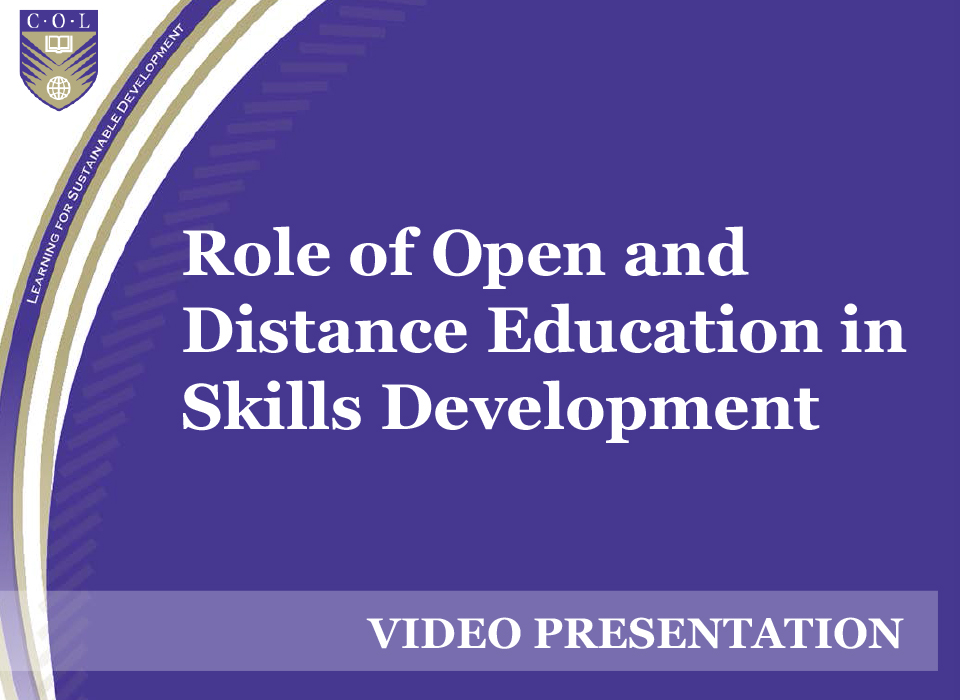
Greetings to all of you attending the STEM Fest 2015, and the session on “Skilling a Nation’s Future” organised by the Open and Distance Learning Association of Australia. I thank Dr. Som Naidu, President of ODLAA for the invitation.
Many of you know my organization the Commonwealth of Learning or COL. For the benefit of those who don’t, a quick introduction. We are an intergovernmental organization established by the Commonwealth Heads of Government when they met in Vancouver in 1987. We have been in beautiful British Columbia ever since. Our mission is to help the 53 Commonwealth member states and institutions to harness the potential of distance learning and technologies for expanding access to education and training.
The theme of this session is ‘Skilling a nation’s future’. This is also a top priority for Commonwealth member states. It is a young Commonwealth with 60% of its population under the age of 30. Governments are looking for cost-effective ways in which the youth can be skilled. In fact the Indian prime minister Modi has called for the 3 S’s: skills, speed, scale. A nation’s future can be secure if skills can be developed at speed and at scale.
The organisers have asked us to address two key questions: What are the big game changers in this space? What are the key priorities for learning and teaching?
First, let me identify three distinct but interconnected game changers. One, technology enabled learning; two, open education and three, a networked world.
Technology enabled learning includes distance learning, online provision and MOOCs. Policy makers and practitioners embraced these learning technologies as they helped increase access and equity, reduce costs and improve quality in Higher Education. As more countries began to achieve universal primary education, there was a huge demand for secondary schooling. Even today, in SSA the transition rate from primary to secondary schools is only 40%. Distance learning was then introduced to expand access to secondary schooling. Similarly, the need for more trained teachers led to the use of distance learning in teacher training. In fact the use of distance learning is no longer limted to higher education alone but covers all sectors of formal education.
When the international community adopted the MDG’s, COL began to look for ways in which distance learning could be harnessed to achieve the development goals. This meant deploying DL in non-formal and informal sectors as well for a more cost-effective approach. Here is Rehana Khatun from Bangladesh who started a poultry farming enterprise as a result of this training. Using the flexible and blended learning approach over 6000 women have been trained in income generating skills, and more than 1000 new small business have been started in Bangladesh alone under the non-formal skill development programme supported by COL.
The second game changer is open education. This includes flexible, work-place based learning, Open Education Resources and open access policies. Let me just focus on OER. As we know, OER are teaching, learning and research materials, digital or otherwise, either available in the public domain or with an open license. The open license allows different degrees of freedom to use, reuse, revise and re-distribute any work, without barriers or restrictions. In 2012, COL and UNESCO, with the support of the Hewlett Foundation organized the World OER Congress in Paris that resulted in the OER Paris Declaration. This has had a major impact on governments around the world. Within the Commonwealth, countries as diverse as India and Antigua and Barbuda have adopted OER policies. In Canada, three provincial governments of BC, Alberta and Saskatchewan have committed to promoting OER and open textbooks. COL has developed a Directory of OER in skills development and this becomes a useful resource for anyone anywhere in the world.
This openness has been extended to COL’s MOOCs 4 Development. M4D is a MOOC platform which can be offered in a low-bandwidth situations and uses blended approaches. COL in partnership with IIT-Kanpur offered an audio MOOC for skilling gardeners, delivered through basic mobile phones using audio content. The content of these MOOCs are available as OER.
The third game changer is an increasingly networked world. While in North America, there are over 80 internet users per 100 persons, in developing countries the average drops to 34%. However, the rise of mobile telephony has connected even the most remote and deprived.
COL offers a new approach called the Lifelong Learning for Farmers, or L3F. COL catalyses the links between the civil society, experts and financial institutions to develop multi-media based learning. Research shows that for every dollar invested, income and assets worth $9 have been generated among these farmers in India, who became lifelong learners using basic mobile phones. Not only are the L3F participants learning from the experts but from each other using networked technologies.
As we can see, the power of these game-changers can be harnessed to provide skills at speed and scale.
Coming to the second question: What are the key priorities for learning and teaching? The MDGs, which have helped the international community to achieve many targets such as UPE will come to a close this year, to be followed by the sustainable development goals that will define the development agenda for the next 15 years.
Goal 4 of the 17 SDGs identified focuses on education. The objective of this Goal is to ‘ensure inclusive and equitable quality education and lifelong learning opportunities for all’ by 2030.
The goal has several targets: one, quality education must lead to effective learning outcomes, two, we must focus on developing skills for employment, entrepreneurship and global citizenship, and three, having qualified teachers in place will be critical to achieving these targets.
We need to skill our young people at scale in the formal, non-formal and informal sectors. Traditional brick and mortar approaches will not be enough. ODL and technology enabled learning will become more important than ever before.
Thank you for your attention.


